Updated June 1, 2024
In the 2002 movie Catch Me if You Can, the main character is a young scam artist who lives a glamourous jet-setting lifestyle that is financed by check fraud. Set in the 1960s, the scammer impersonates a Pan-Am pilot and flies around the world, all the while cashing fake Pan-Am payroll checks.
He is caught by an FBI agent who has tirelessly pursued him for three years, and after some prison time, the FBI recruits him as a check fraud consultant. This is based on the true story of Frank Abagnale who later became a famous fraud security consultant.
There is a scene in the movie that reminds us of how far we have come in check fraud detection. A team of FBI fraud investigators are sitting at long tables in a poorly-lit room. Each has a stack of bad checks to examine, holding a check up to the light, poring over it with a magnifying glass in hand, trying to spot the tricks used by the fraudster.
That is how check fraud prevention used to be done. Humans squinting at checks, struggling to keep up with the volume of work and making mistakes. No automation whatsoever. And unfortunately for the bank, most fraud wasn’t detected until well after the check cleared and the money disappeared forever.
Fast forward 50 years later and my, how things have changed. No longer do humans need to painstakingly examine every check and hope they didn’t miss the bad one. Today, AI-powered software can mimic human investigators, detect check fraud in milliseconds and stop the scam before any money changes hands.
Check Fraud is Still a Big Problem
Even though check usage has declined, check fraud still results in the loss of billions of dollars a year for banks, financial institutions, and retailers, regardless of their size or location. The 2018 ABA Deposit Account Fraud Survey estimates check fraud losses at $1.3 billion, and 2023 saw plenty of concerning metrics too.
The fraud takes various forms of illegal and deceptive practices that include signature forgery, counterfeit checks and physical alteration of the paper check. Identity falsification that had previously been the specialty of professional forgers has become widespread.
Advances in technology are partly to blame. Highly-sophisticated, but inexpensive technology is now available to criminals, allowing them to access basic personal or corporate account information and produce hundreds of authentic-looking counterfeits or forged checks in a matter of hours.
Check21’s approval of image exchange has added complexity to the situation, because bank investigators can no longer rely on the physical clues of a paper check that were used in the past to identify fraud, such as color, smell and feel of the paper.
The image exchange paradigm shift and high level of perpetrator sophistication requires an increased level of analysis for institutions looking to protect themselves from check fraud losses. While criminals have access to more sophisticated technology with which to attack the weak defenses of companies, new technology is constantly evolving to arm financial institutions with multiple effective means to fight fraud. The use of images has also enabled levels of fraud detection automation previously unattainable.
The Fraud Prevention Solution
There are a variety of efficient fraud prevention solutions that are cost effective for both large banks and smaller organizations. Because of the widespread use of check images through the ACH system, with the right software tools we can automate fraud detection processes at speeds, accuracy levels and volumes that could never be achieved by human investigators.
Let’s review some of the state-of-the-art software components that are now available.
- Automated Signature Verification. The most advanced systems use AI and machine learning to reveal all types of signature fraud, including random and skilled forgery, with accuracy rates that far surpass visual verification. Biometric signature verification systems benefit from combining multiple engines that analyze temporal biometric characteristics such as speed, acceleration, deceleration, stroke sequencing and length, pen pressure and timing information received directly during the act of signing, together with a proven innovative technology that scrutinizes signature shape. Taken together, this enables biometric signature verification to be accurate, intuitive, and fast.
- Check Stock Verification. This protects financial institutions against counterfeit checks, the fastest-growing source of fraudulent check activity. Image-based check stock verification software examines the check’s format and features using advanced machine learning and AI. Multiple methods of verification – including multiple forgery detection algorithms, quantitative analysis, pattern recognition, analytical and geometrical analysis, and neural networks – ensure accuracy.
- Courtesy Amount / Legal Amount Mismatch Detection. Sophisticated Machine Learning algorithms not only read numeric and text amounts and catch the potential discrepancy between CAR and LAR, they also analyze behavioral characteristics from the typical check writer’s errors and abbreviations in writing checks and distinguish mismatches that may result from fraudulent activity. This helps to eliminate the number of false alarms and reduces unnecessary human intervention.
- Automated Payee Match Positive Pay. This is an enhancement to automate the traditional positive pay application. Image analysis and pattern recognition technology offer an automated solution for reading both machine printed and handwritten payee data from the check. It provides an extra layer of protection by comparing payee information from checks to the payee information provided in the customer-issued file. Previously this was either not accomplished or was accomplished using a laborious and time-consuming manual process in the back-office operation of the financial institution.
You can learn more here about advanced check fraud prevention software.
AI-powered Fraud Detection Tools
Fraud investigators no longer need a magnifying glass and a good vision care plan to do the job. They now have powerful AI weapons at their disposal to catch the fraudsters and to automate the drudgery of the task. They can deploy an arsenal of reliable and cost-effective automated tools from companies such as Parascript. The benefits include timely fraud prevention, the mitigation of fraud losses, protection of the bank’s assets and improved customer loyalty.
